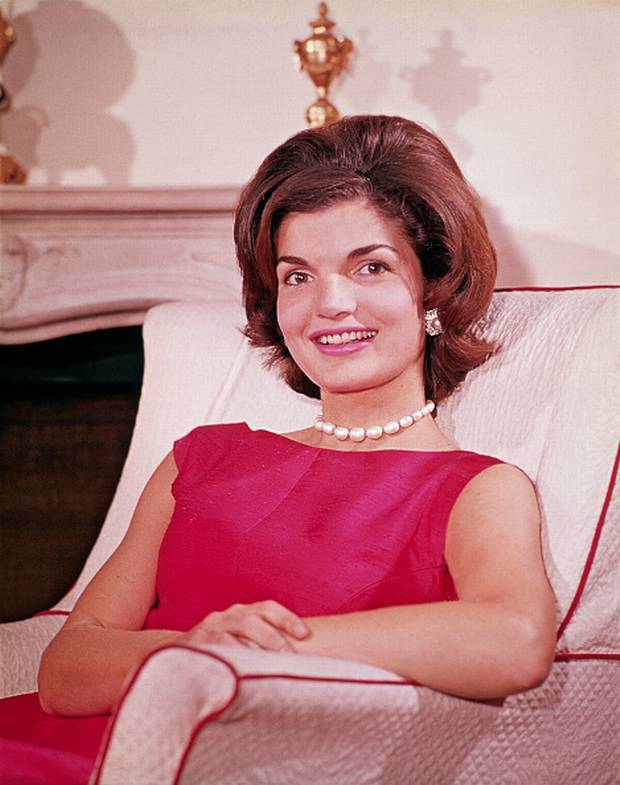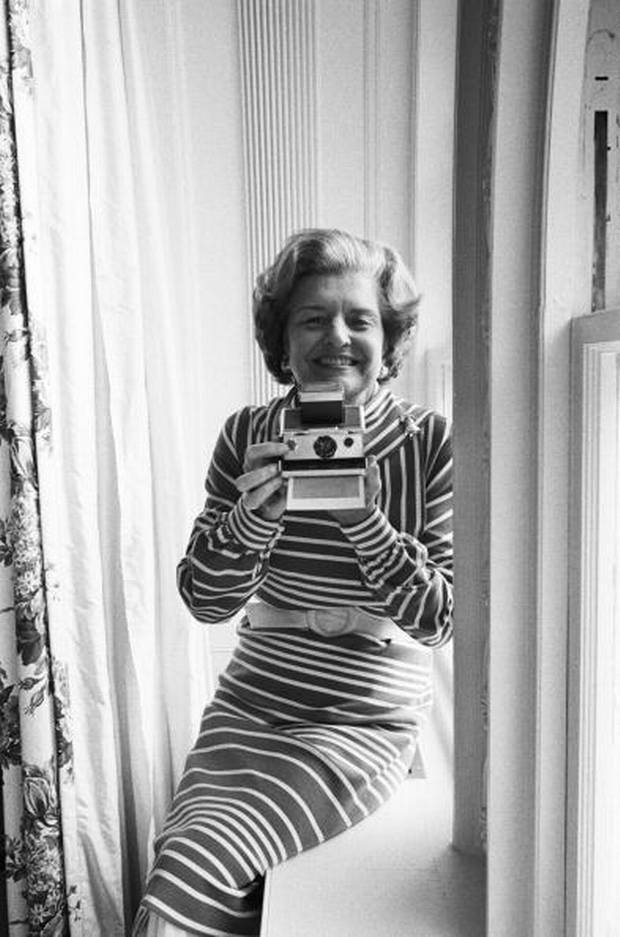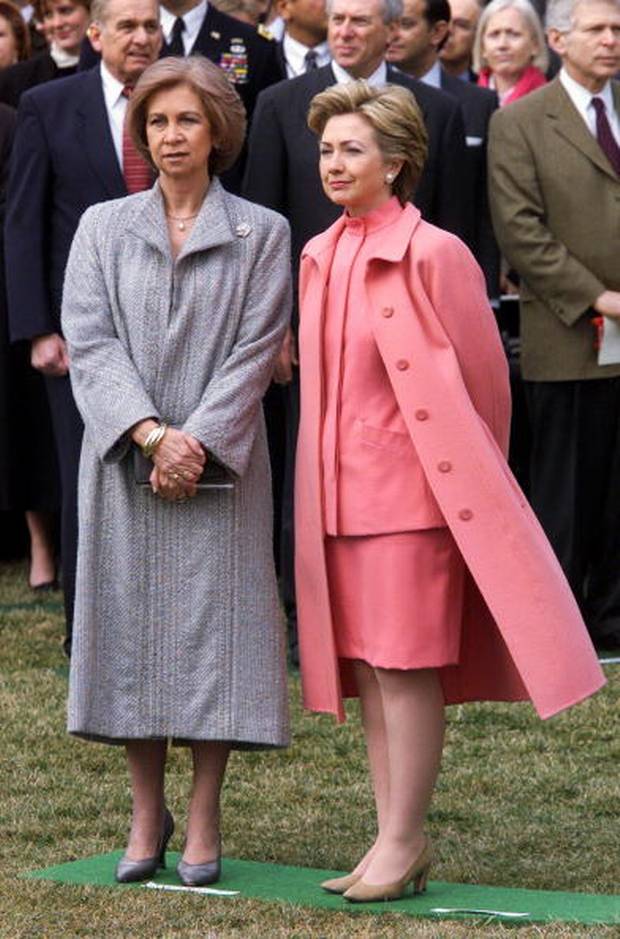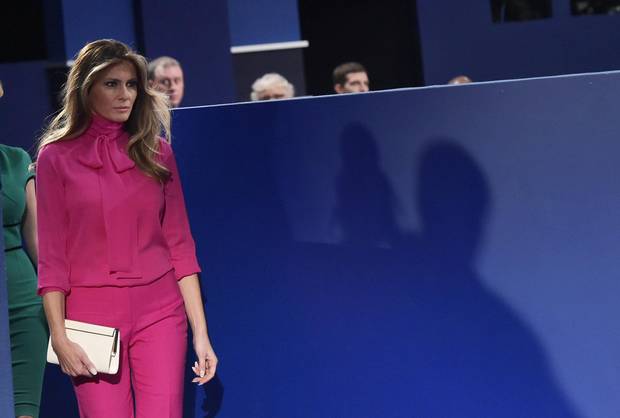'A newspaper reported I spend $30,000 a year buying Paris clothes and that women hate me for it," Jacqueline Kennedy told The New York Times soon before her husband took office. "I couldn't spend that much unless I wore sable underwear."
Fur skivvy quips aside, the public's relentless fascination with her fashion choices was exactly what Kennedy craved – and intentionally fostered – during her time as the first lady. That is certainly the view of director Pablo Larraín, whose new film, Jackie, portrays a wilful style icon keenly aware of the power of dress to define gender relations and shape cultural identity in the public eye.
One of the leading fashion idols of the 20th century, Kennedy cultivated an image of pristine glamour; it was her way of controverting the political and personal turmoil of the time. Her meticulously crafted image evoked a form of sartorial sainthood, and her signatures – the pillbox hats, the pearls, the oversized shades – transformed into relics still revered to this day. Indeed, Kennedy's astute command of her celebrity changed the role of the first lady for good. Shedding their ceremonial mantles, her successors have been equally savvy in sporting their ideologies through style to communicate a purpose and champion the social causes most important to them.

Jacqueline Kennedy at her Georgetown home in August 1960.
Bettmann/Bettmann Archives
Jacqueline Kennedy (1961-1963)
Jacqueline Kennedy, like her husband, was a glamorous figure ripe for the television age. Although she defined herself in traditional terms, she strongly valued civic duty and stood for the preservation of art and culture. Through careful calculation, she created an air of easy perfection with clean-cut skirt suits, A-line dresses, elegantly structured gowns, elbow-length gloves and kitten heels. Her aspirational style was the materialization of the American Dream and it quickly flowed into the mainstream as women the world over sought (and still seek) to emulate her singular sense of class and sophistication – the very image of success.

First Lady Betty Ford takes a Polaroid photograph of the official presidential photographer on the patio just outside the White House Oval Office on August 13, 1976 in Washington, D.C.
David Hume Kennerly/Getty Images
Betty Ford (1974-1977)
An outspoken feminist activist, Betty Ford favoured brightly coloured fabrics and switched seamlessly from flowing gowns to slim-tucked dresses and tailored suits. Although not a trendsetter by design, the former model and fashion buyer dressed in an undaunted style that spoke volumes as she argued publicly for equal rights for women and spoke openly about her battle with alcoholism and substance abuse. It's no wonder the candid first lady dedicated the majority of her wardrobe to three prints-driven designers of the time: Frankie Welch, Luis Estevez and Albert Capraro.
Mila Mulroney, (left), Naoka Takeshita, Anna Maria De Mita, Nancy Regan and Hannelore Kohl wave to onlookers before taking a boat cruise in the Toronto Harbor in June, 1988.
JOHN WOOD
Nancy Regan (1981-1989)
In a nod to Jacqueline Kennedy, Nancy Reagan preferred a more polished American style, opting for prim suits and glamorous evening gowns by such American fashion icons as Bill Blass and Oscar de la Renta. As her husband's free-market policies took hold, she invested boldly in the business of looking good, commissioning, among others, designer James Galanos, who made her 1985 inaugural ball gown with a reported 300 hours' worth of embroidery. As a champion of the prevention of recreational drug use and founder of the "Just Say No" drug awareness campaign, she was a stalwart purist with an immaculate wardrobe to match.

Queen Sophia of Spain and First Lady Hillary Rodham Clinton look on during White House welcoming ceremonies for Sophia and her husband, King Juan Carlos.
Harry Hamburg/NY Daily News via Getty Images
Hillary Clinton (1993-2001)
As hard as it may be to look past the monotone pantsuits of her campaign, Hillary Clinton's first lady style was as varied as the roles she played throughout her husband's two terms. In skirt suits ranging from bold red to blush pink with gold hardware, she headed the Task Force on National Health Care Reform, pushed for adoption and foster-care reform, and founded the Save America's Treasures program to preserve and restore historic artefacts and sites. Her fashion choices as the first lady were at once strong and decidedly feminine, a sign of the fine sartorial line she would walk as a female politician for years to come.
Children cheer as U.S. first lady Michelle Obama arrives for a taping of the TV cooking show “Top Chef” in Dallas, Texas February 10, 2012.
KEVIN LAMARQUE/REUTERS
Michelle Obama (2009-2017)
No other first lady has made as much of an impact on the fashion world since Jacqueline Kennedy. Skilfully mixing timeless elegance with relatable style, Michelle Obama is a fashion icon for the 21st century. An advocate for American design, she yields the power to boost a clothing brand simply by wearing one of their designs. (J. Crew's stock price, for one, jumped 25 per cent after she appeared on The Tonight Show in one of the brand's ensembles). A wardrobe consisting mainly of mid-market attire is a fitting choice for a true woman of the people who has worked tirelessly to fight childhood obesity, make higher education more affordable and support military families.

Melania Trump arrives for the second presidential debate between Republican presidential nominee Donald Trump and Democratic contender Hillary Clinton at Washington University in St. Louis, Missouri on October 9, 2016.
MANDEL NGAN/AFP/Getty Images
Melania Trump (2017-)
Trump has pledged to combat cyber-bullying once her husband takes office, a goal that's as unlikely to be achieved as the fashion world collectively embracing of the future first lady. While a number of top designers, including Tom Ford and Marc Jacobs, have spoken out against dressing Trump, Tommy Hilfiger recently told Women's Wear Daily that "any designer should be proud to dress her." Considering she had no problem buying pricey designer pieces off the rack throughout the presidential campaign, chances are Trump will maintain her high-brow style whether fashion's love affair with first ladies takes a hiatus or not.